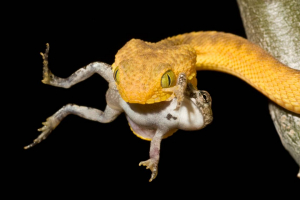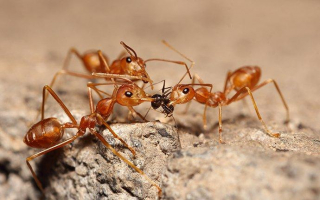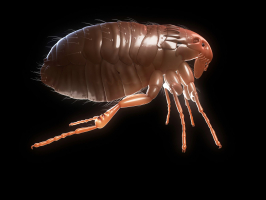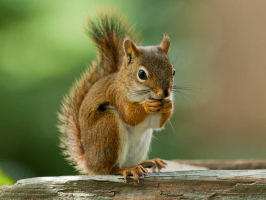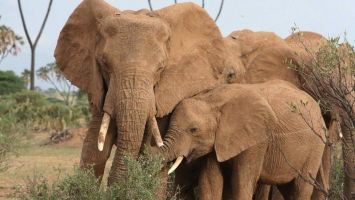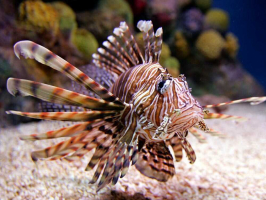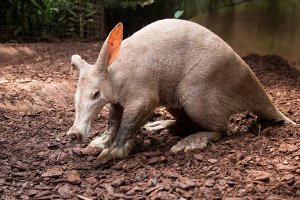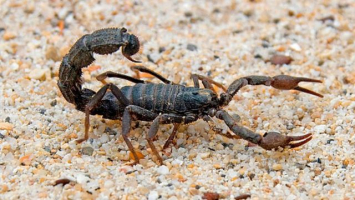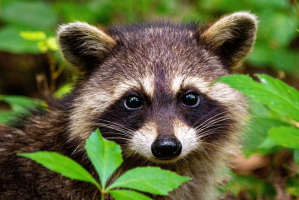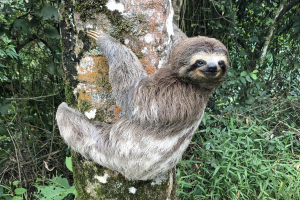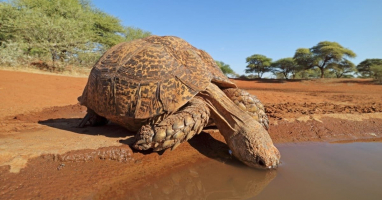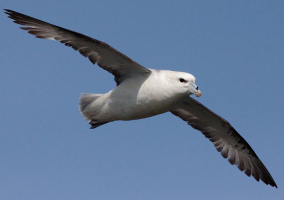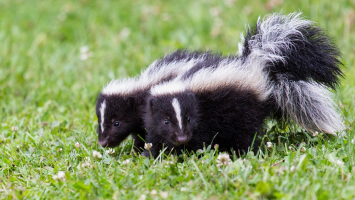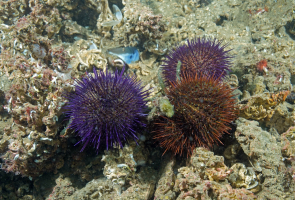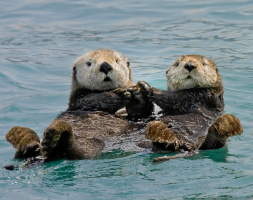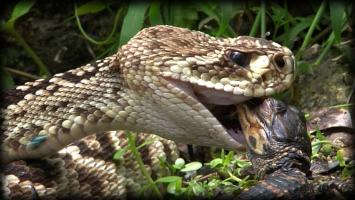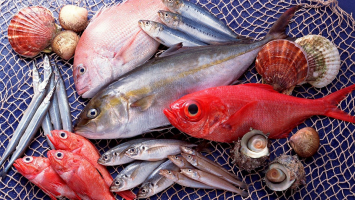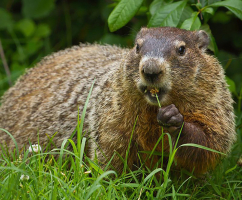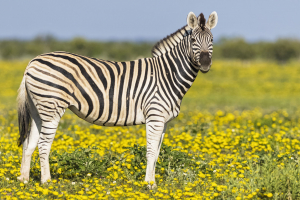Top 8 Predators of Turtles that Eat Turtles
If you’ve ever owned a turtle as a pet, you know they are cute and fun to watch. But in the wild, not all things are cute and fun to watch. In fact, there are ... read more...some animals that love eating turtles. But what eats turtles? The predators of turtles vary depending on the species of turtle and where it lives. Toplist will list down all the predators of turtles that eat turtles in the sea, sky, and on land.
-
Tiger sharks are a type of migratory shark that often lives in the temperate and tropical waters surrounding the islands in the center of the Pacific Ocean. These sharks were given their names because of the dark, vertical stripes that span the length of their bodies. Yet as they get older, the stripes begin to vanish.
Tiger sharks are said to have a varied diet and are at the top of the marine food chain. As nocturnal predators, these sharks travel inland at night to hunt and eat. Based on their ability to hunt, sharks of all ages have various diets. Small fish, jellyfish, and mollusks make up the bulk of the diet of young sharks. The adults, on the other hand, eat a variety of fish species, sea snakes, seabirds, common, bottlenose, spotted dolphins, sea lions, and other marine mammals like seals and turtles.They particularly target the leatherback, loggerhead, and green sea turtle species. Despite having some rather robust body armor, tiger sharks' sharp teeth may easily cut through sea turtles' hard carapaces. The shark methodically circled its victim before moving in for the kill, repeatedly biting the turtle before latching onto its grab and plunging into the depths. When preying on turtles, predators typically wait for their shelled prey to reach the surface for air before slicing apart the strong carapaces with their razor-sharp, recurved teeth that resemble "can openers."
But these reptiles don't always make for easy pickings. Turtles have been recorded showing off some nifty defense tactics when under attack.
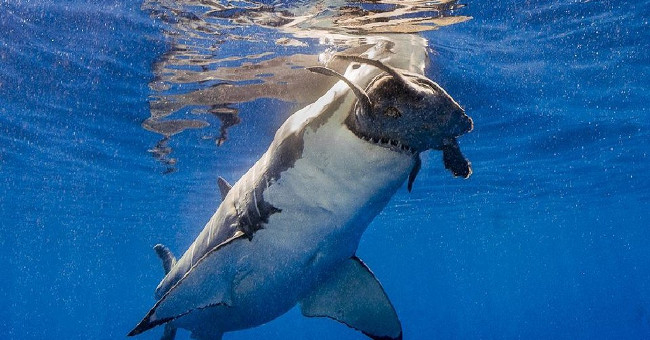
Photo: https://tipsmake.com/turtles-shake-me-to-avoid-the-death-of-tiger-sharks 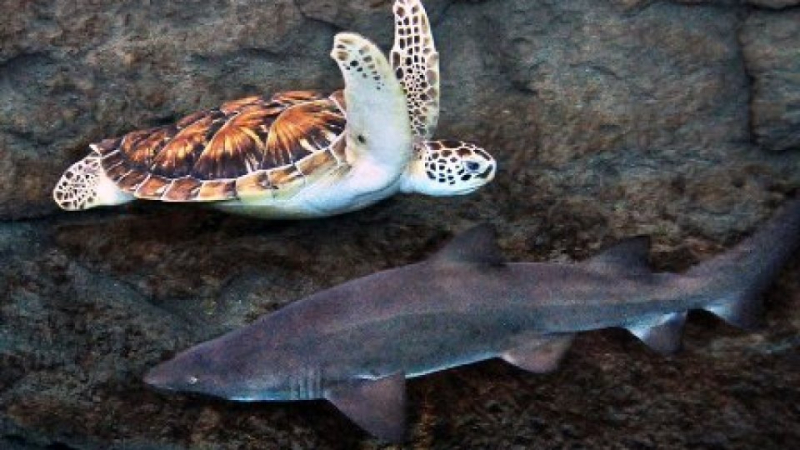
Photo: https://seaturtleexploration.com/sharks-and-sea-turtles/ -
Orcas are a kind of toothed whale that may be found in all of the world's seas and oceans and are members of the Delphinidae family. These global species are the biggest members of their family and apex predators as well. The "Orcas" is another name for them.
Killer whales can be recognized and distinguished from other dolphins based on their looks. They have two prominent white patches on top, one near each eye, and a black back, a white chest, and white undersides. These whales have unique tastes when it comes to their nutrition and can feed on fish, mammals, sea turtles, seabirds, or cephalopods.Although orcas do not typically hunt sea turtles, the potential to do so may be growing more and more useful to orcas. Orcas have all the tools necessary to turn a turtle into a tasty meal. Orcas can readily pierce a sea turtle's a hard shell with the help of a set of strong jaws and robust teeth that can be four inches long.
Only a few species of huge sharks, including orcas, crocodiles, jaguars, and crocodiles, have the strength to pierce an adult sea turtle's tough shell. Even an adult sea turtle is low-hanging fruit for these predators because sea turtles have little defenses besides a thick shell.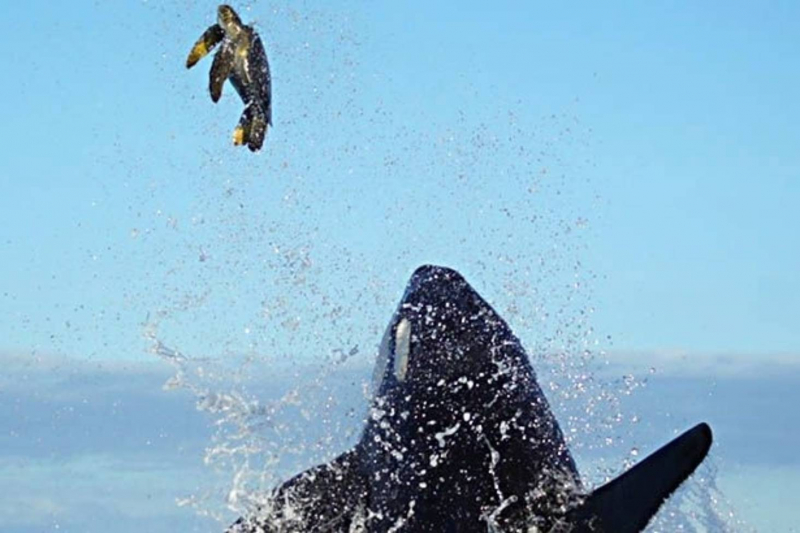
Photo: https://www.stuff.co.nz/travel/destinations/82731641/killer-whale-attacks-sea-turtle-in-galapagos-islands-video-from-cruise 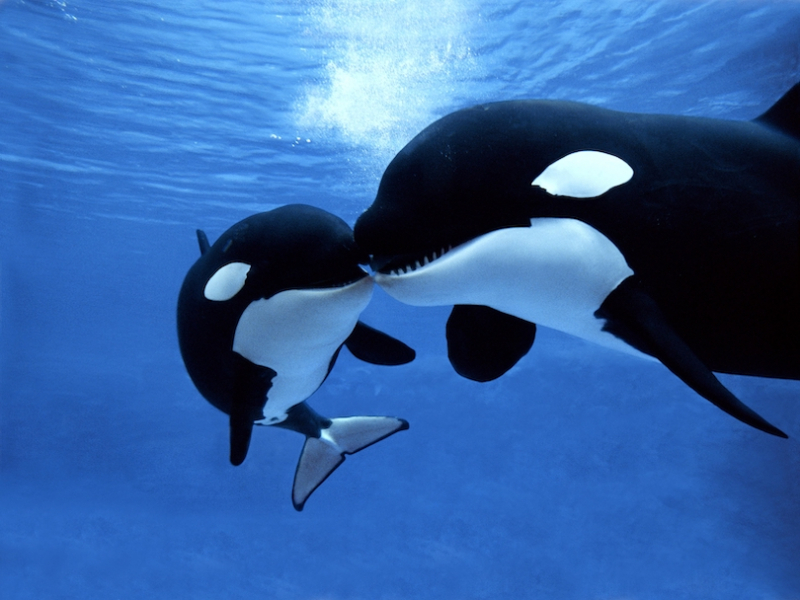
Photo: https://www.stuff.co.nz/travel/destinations/82731641/killer-whale-attacks-sea-turtle-in-galapagos-islands-video-from-cruise -
Although their population is not as extensively dispersed, great white sharks are also well known for their vast distribution in all the main oceans. These sharks are members of the huge mackerel shark species, which is notable for its size and longevity, making it one of the cartilaginous fish species with the longest life spans.
Although these sharks' appearances are similar for both sexes, they exhibit sexual dimorphism in size, with the females being larger than the males. Their undersides are white, and their upper bodies are dark grey. The only other natural predators of great white sharks are orcas. The young fish typically consume smaller fish because their teeth aren't powerful enough to devour seals or bigger species.
The adults, on the other hand, eat other sharks, all varieties of seals, sea otters, seabirds, and sea turtles in addition to dolphins, whales, and porpoises. Sea turtles are indeed eaten by great white sharks. They actually pose the greatest threat to sea turtles, especially after they reach adulthood. Because of their size and strength, great white sharks can pierce the shell of sea turtles. Although all sharks frequently attack sea turtles' fins first, a great white shark can easily bite through the turtle's shell, seriously injuring it and making it an accessible target for paralyzing and then rapid consumption.
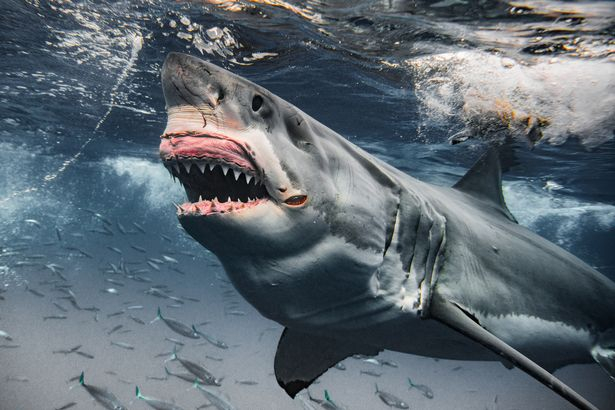
Photo: https://www.mirror.co.uk/news/world-news/spine-chilling-footage-shows-huge-27480162 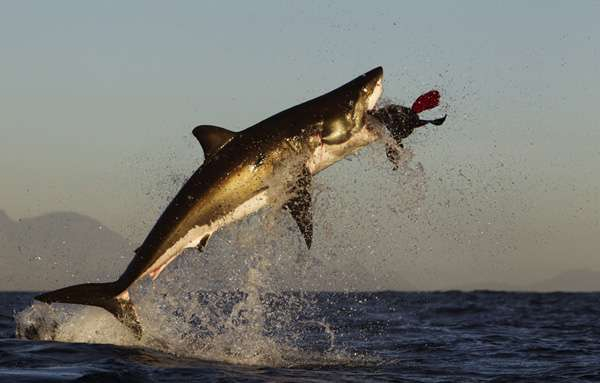
Photo: https://wondersparkjewelry.com/blogs/news/endangered-sea-turtles-the-good-the-bad-the-ugly -
A type of animal native to North America is the raccoon. The procyonid family's largest member is them. These mammals appear enigmatic and masked due to their predominantly white faces with dark eye patches. With a thick underfur that shields them from harsh winter temperatures, the fur on the rest of their bodies ranges in color from faded brown to dark greyish in the shadow.
Nighttime animals and raccoons consume a well-balanced omnivore diet that includes 33% plant matter, 27% vertebrates, and 40% invertebrates. Raccoons prefer hunting smaller species that are simpler to trap, despite the fact that most people appear to believe that they frequently prey on huge animals and birds.
They frequently prey on smaller turtle species. Raccoons will undoubtedly devour turtles if given the chance. Due to their decent swimming abilities despite their large size, they pose a serious threat to turtles. They can therefore go after a turtle in the water as well. Raccoons are notorious for smelling turtle eggs buried in the ground, excavating them, and eating them because of their keen sense of smell. They can eliminate a turtle's nest in a matter of minutes. Even if a turtle's hard shell provides adequate protection, cunning creatures will nonetheless find a method to open them. The turtles are typically carried off by raccoons to a secure location where they may quietly consume them.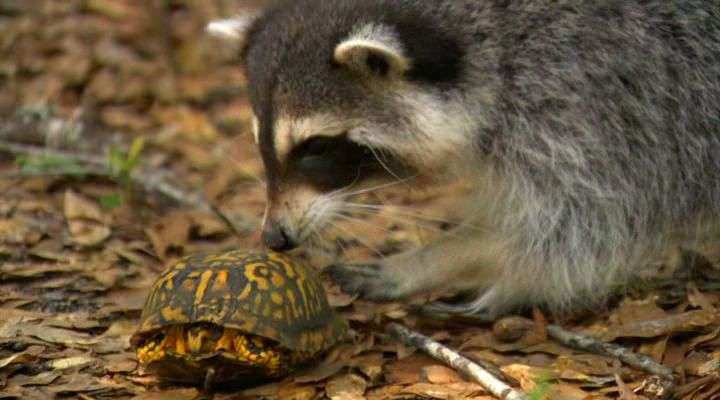
Photo: https://www.dpreview.com/forums/thread/4013527 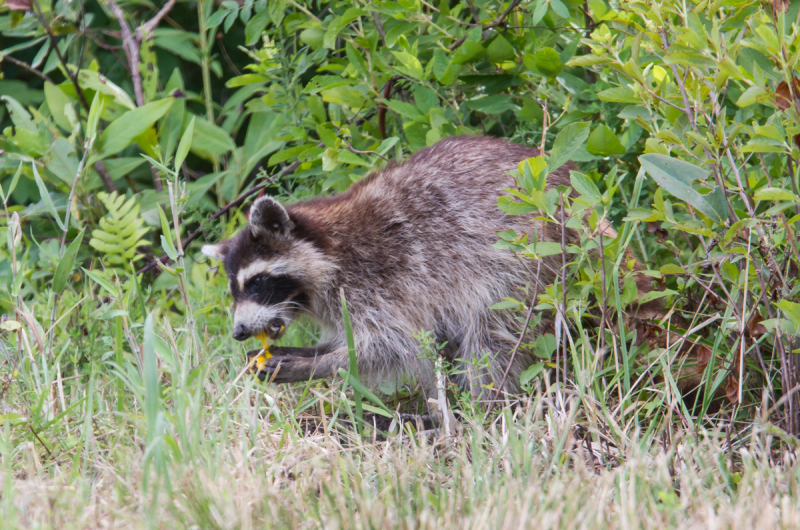
Photo: https://roadsendnaturalist.com/tag/turtle-nest/ -
The genus in which weasels are found also includes ferrets, polecats, and minks. Ten of the 17 currently known species of the Mustela genus are classified as weasels. Some weasels eat both meat and plants, however, most are strict carnivores.
Weasels are able to penetrate their prey's burrows thanks to their slim bodies. These animals, despite being little, are skilled hunters who pursue mice, voles, rats, and rabbits. They occasionally also eat small birds, frogs, and their eggs.Weasels hardly ever come across turtles in the wild, which is unfortunate. But when they come face to face, they can deal these shelled creatures a lot of serious damage. Although they are unable to break their shell, they can chew on body portions like their head or limbs that are exposed. Weasels also threaten turtle eggs, so turtles are not entirely protected.
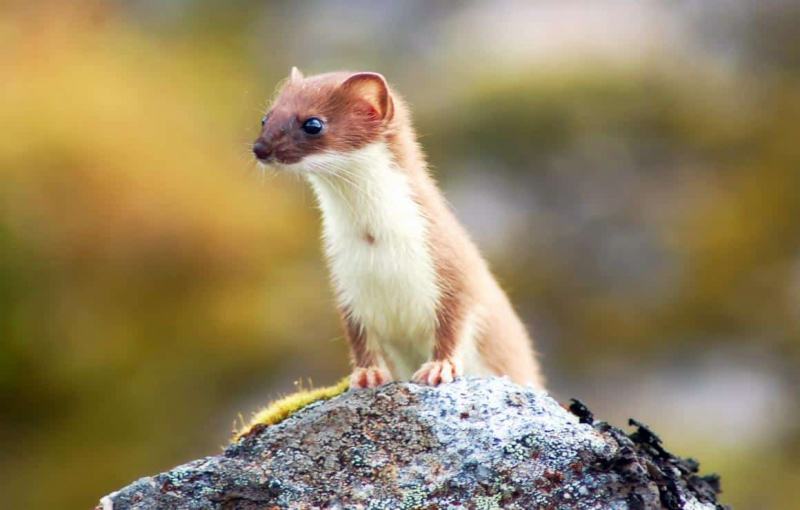
Photo: https://a-z-animals.com/blog/what-do-weasels-eat/ 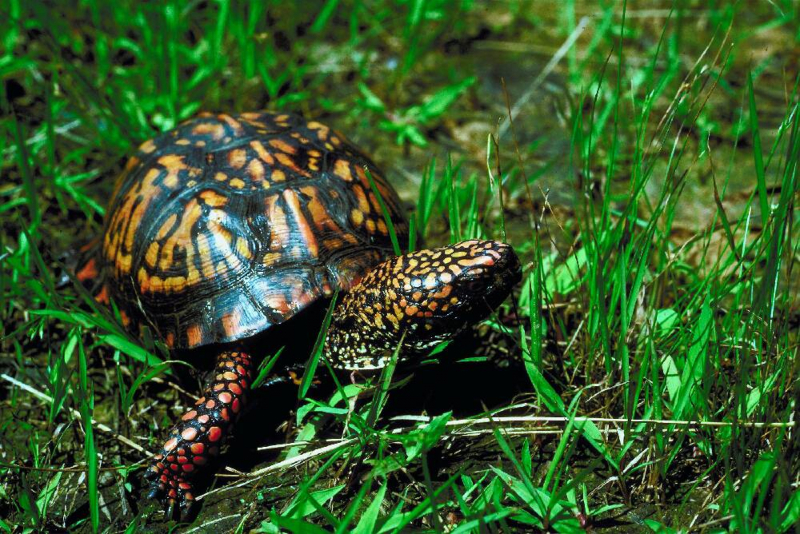
Photo: https://www.timesfreepress.com/news/chatter/story/2020/may/01/how-common-box-turtle-became-one-most-heavily-trafficked/521651/ -
The largest and deadliest members of the crocodilian order are crocodiles. There are 16 extant species of these enormous reptiles, which are semi-aquatic in nature, and they may be found in the Americas, Australia, Asia, and Africa. The only crocodile species to be found in North America is the American crocodile (Crocodylus acutus).
Crocodiles rise to a significant position in the food chain. They are ambush predators that lurk in wait for their victims before suddenly attacking them. They eat both land and aquatic creatures because they are semi-aquatic. They consume fish, crustaceans, mollusks, fish, reptiles, birds, mammals, and even baby crocodiles.Crocodiles would have no trouble eating turtles, despite the fact that they don't typically include them in their diet. A crocodile can bite with a force of 3,700 pounds per square inch despite a turtle's strong shell. Enough to break the turtle's shell, actually. Additionally, turtle shells can be eaten by crocodiles. A turtle's shell resembles reshaped ribs. It is composed of a variety of substances, the majority of which is keratin—the same substance that makes up other animals' hair and nails.
When turtles are in the water, crocodiles hunt them. Freshwater turtle species can occasionally be found in crocodile environments. They have assured a meal if they come into contact with a crocodile. Turtles move slowly compared to other animals. The crocodile doesn't have to work very hard to track down and devour the turtle. To successfully destroy the turtle's shell, a crocodile merely needs to bite it repeatedly.
Crocodiles must devour turtles in order to survive. They must eat. Crocodiles don't eat every day, although they do hunt what is available. Crocodiles can't eat turtles because they are too small, but they make good appetizers. Crocodiles are willing to prey on turtles. Turtles move slowly, yet crocodiles can move quickly and break their shell.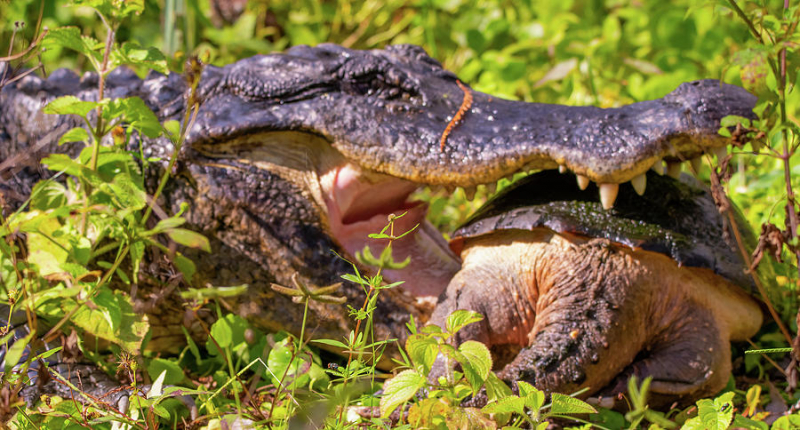
Photo: https://urbanfishkeeping.com/do-crocodiles-eat-turtles/ 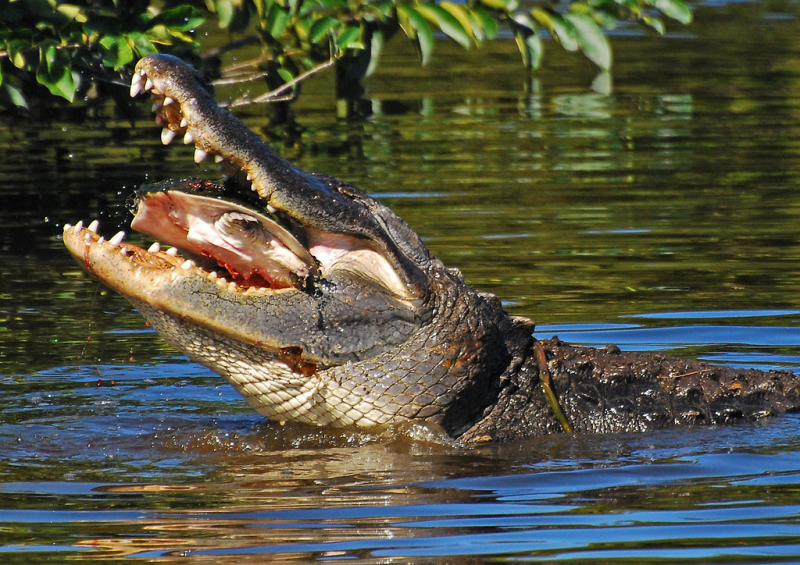
Photo: https://www.quora.com/What-animals-prey-on-turtles -
Another crocodilian reptile, alligators are typically smaller than crocodiles and have more rounded shorter snouts. There are only two species of alligators left in existence, and the American alligator is one of them.
Depending on their age, alligators have different diets. The adults prey on large fish like the Gar, other reptiles, birds, and animals like muskrats and coypus, while the younger alligators consume insects, worms, snails, crabs, and tiny fish species as food. Additionally, they eat turtles.
Alligators do sometimes eat turtles. They do not necessarily go for large turtles, just turtles that are smaller and can easily fit inside their mouth. Alligators do not usually attack turtles. The majority step into this situation when they are hungry and see an opportunity to catch an easy meal. Alligators mostly feed on aquatic turtles that live in freshwater ponds and swamps.For many reasons, turtles make a good choice of prey. First of all, they have significant meals for the alligator thanks to their enormous, meaty bodies. Second, because they have weak defenses, turtles are easy prey. When an alligator gets close enough, turtles have no way of escape and no weapons with which to defend themselves. As a result, they are a fairly simple prey item for an alligator to catch and devour. Despite the fact that turtle shells are quite hard, they are not a defense against hungry alligators, who may easily crush a turtle in their jaws. A turtle's shell can be easily torn open by an alligator's teeth, which have the capacity to exert 300 pounds of force per square inch.
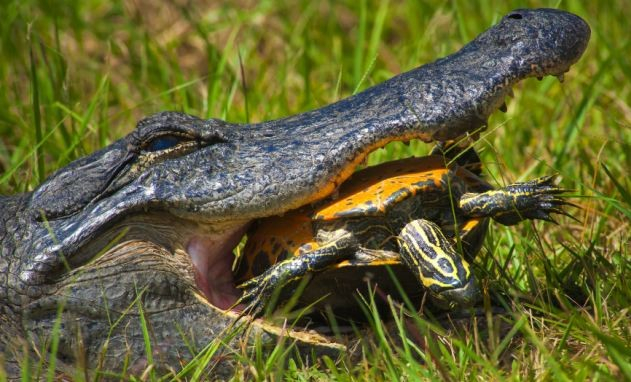
Photo: https://www.dailymail.co.uk/sciencetech/article-2314541/Turtle-shell-withstands-15-minute-attack-alligator-fails-crack-shell.html 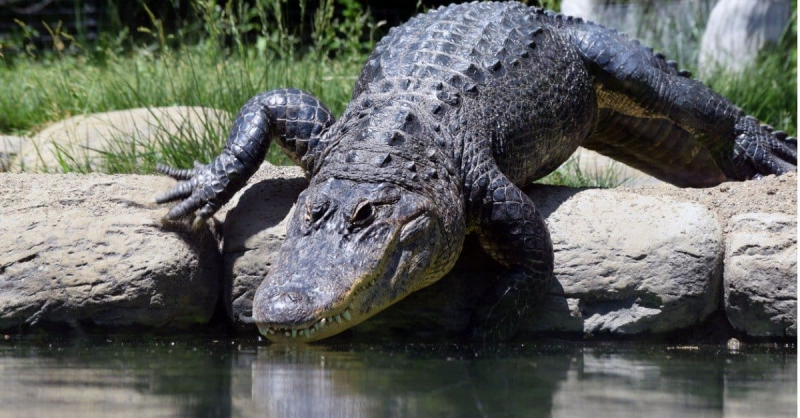
Photo: https://a-z-animals.com/blog/do-alligators-eat-turtles-or-are-they-friendly/ -
Also referred to as “seagulls,” the gulls are a group of seabirds that are closely related to the terns. Over 50 recognized gull species in the world have varying sizes, with the Great Black-backed Gull (Larus marinus) being the largest and the Little Gulls being the smallest.
All gull species have substantial bodies, moderate necks, and lengthy wings despite their various sizes. The majority of them also have rounded tails (except for 3 species). The gulls can eat fish, reptiles, amphibians, rodents, earthworms, insects, eggs, and invertebrates. They are flexible eaters with a wide diet. In addition, they have been observed eating plant items like fruits, seeds, and leftover human foods.
Gulls can consume certain species of tiny turtles, including their eggs and hatchlings. The unfair advantage of being able to spot young sea turtles from the air or the ground belongs to seagulls. A seagull flock can completely destroy a nest of 100 hatchlings as they battle to run through the dunes and into the ocean. Baby sea turtles are snatched up by seagulls along the beach as they scramble through the sand towards the water, and frigate birds swoop them up from the water and land's surface.
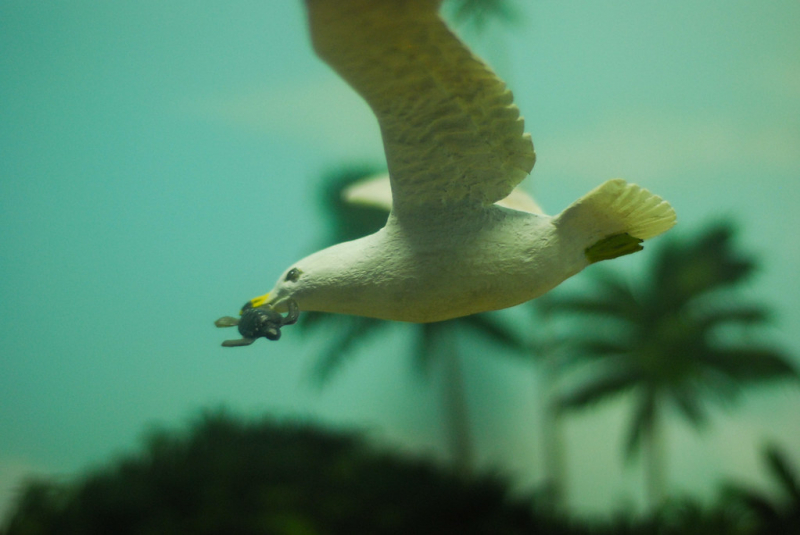
Photo: https://www.flickr.com/photos/maveric2003/2282399031 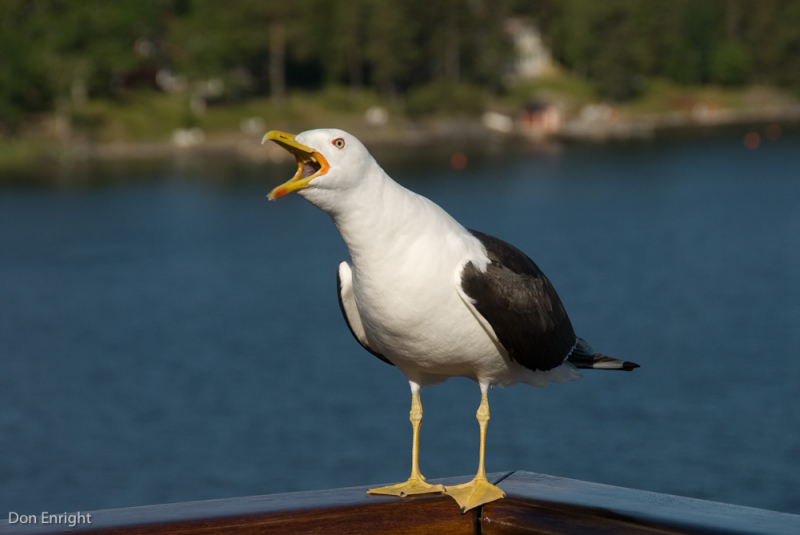
Photo: https://www.savecoastalwildlife.org/save-coastal-wildlife-blog/2020/2/17/have-we-all-missed-the-point-about-seagulls










